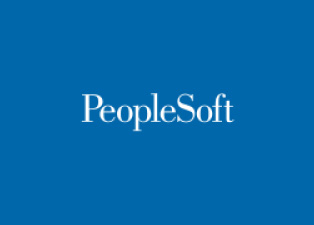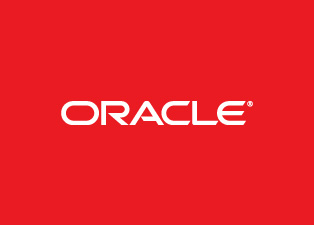Oracle FUSION ADF Online Training
Oracle FUSION ADF Online Training

Oracle FUSION ADF Online Training Course Content:
Introduction To fusion Middle ware
- Oracle Fusion Middleware
- Oracle Fusion Middleware Benefits
- Components of Oracle Fusion Architecture
- Oracle Application Development Framework (ADF)
- The Model-View-Controller Design Pattern
- Implementing MVC with the ADF Framework
- Technology Choices for Fusion Applications
Whats New in 11g?
- ADF 11g New Features: ADF Business Components
- ADF 11g New Features: ADF Model and Databinding
- ADF 11g New Features: ADF Controller
- ADF 11g New Features: ADF Faces
- ADF 11g New Features: Additional ADF Features
- IDE and Infrastructure
- Java, Java EE, and Web Development
- WLS
Course Application
- Describing the Course Application Scenario
- Course Schema
- Course UI
Getting Started in Jdeveloper
- Creating an Application in Jdeveloper
- Creating a Project in Jdeveloper
- Creating a Database Connection in Jdeveloper
Understanding Business Domain Layer
- Characteristics of Entity Objects
- Using Entity Objects to Persist Data
- Creating Entity Objects
- Creating Entity Objects from Tables, Views, or Synonyms
- Synchronizing an Entity Object with Changes to Its Database Table
- Associations
- Using Entity Objects and Associations Programmatically
- Finding an Entity Object by Primary Key
- Modifying the Default Behavior of Entity Objects
- Control Hints
- Alternate Key
- Business Events
- Overriding Base Class
Perform Database Interaction
- Characteristics of View Objects
- Using View Objects
- Synchronization of View Objects
- Including Reference Entities in Join View Objects
- Master-Detail Views
- Using View Objects Programmatically
- Using View Criteria
- Iterating Master-Detail Hierarchy
- Interaction Between Views and Entities
- Modifying the Default Behavior of View Objects
- Using a List of Values
- Retaining and Reusing a RowSet
- Overriding Base Class
Application Module
- Characteristics of an Application Module
- Creating an Application Module
- Define the Data Model for the Application Module
- Determining the Size of an Application Module
- The Role of ADF Model
- Exposing Business Components as Data Controls
- Declarative Data Binding
- ADF Model and Data Binding
- Application Module Files
- Centralizing Implementation Details
- Adding Service Methods to an Application Module
- Generating a Java Class
- Coding the Service Method
- Publishing the Service Method
- Business Components Transactions
- Accessing a Transaction
- Committing Transactions
- Customizing the Post Phase
- Customizing the Commit Phase
- Service Data Object
Web Services in ADF
- Business Service Interface and Business Object
- When to Build Services
- What Service Operations to Build
- Building Specialized Service Operations
- Calling the Service Interface
- Defining Business Logic
- Service Business Interface Testing
- Advanced Techniques
- Using Inheritance
- Polymorphic View Objects
- Custom Properties
- Calling a Web Service from an ADF BC Application
- Calling a Non-Fusion Web Service
- Creating the Web Service Proxy
- Calling the Web Service Proxy
Validation
- Validation Options
- Using Pre-built Declarative Validation
- List Validator
- Using Groovy
- Method Validator
- Compare Validator
- Regular Expression Validator
- Key Exists
- Handling Validation Errors
- Defining Your Own Validation
- Creating Declarative Validation Rules
- Programmatic Validations
Troubleshooting Fusion Applications
- Troubleshooting Basics
- Diagnosing the Problem
- Requesting Help
- Logging and Diagnostics
- Java Logging
- Using ADF Diagnostics
- Turning on Diagnostics in Jdeveloper
- Using JDeveloperÂ?s Profiler
- Debugging with Jdeveloper
- ADF Business Components Tester
Introduction to UI technology
JSF
- Using the ADF Controller
- ADF Task Flows
- Managed Beans
- Using Maps and Arrays in Managed Beans
- ADF Task Flow Components
- ADF Control Flow Rules
- Global Navigation Routers for Conditional Navigation
- Method Activities
Developing a Simple Page with ADF Faces
JSF Component Model
- JSF Multiple Renderers
- Adding to JSF with ADF Faces
- Component Palette
- Context Menu
- Data Control Palette
- Model Layer Components
- Types of Bindings
- Expression Language
- Page Definition File
- Accessing Data Controls and Bindings Programmatically
Adding Functionality to Pages
- ADF Faces Rich Client Components
- ADF Faces Input Components
- LOV
- Table and Tree and Tree Table
- Query Components
- ADF Data Visualization Components
Layout Techniques
- ADF Faces Layout Components
- Arranging Items in Columns or Grids
- Automatic Component Stretching
- Panel Splitter
- Panel Accordion
- Panel Tabs
- Table Menus, Toolbars, and Status Bars
- ADF Faces Skins
- Dynamic Page Layout
- Characteristics of Partial Page Rendering
Reusability
- Benefits of Reusability
- Using a Resource Catalog
- Creating an ADF Library
- Creating a Page Template
- Applying a Page Template to a Page
- Creating a Declarative Component
- Creating a Page Fragment
- Characteristics of Regions
- Wrapping a Task Flow as a Region
- Building a Portlet from a Task Flow
Navigation
- ADF Faces Navigation Components
- Buttons and Links
- Access Keys, Tooltips
- Creating Menus
- Creating Context Menus
- Breadcrumbs
- Train Component
- Parent Activity(Task Flow)
Event Handling
- Overview of JSF Page Life Cycle
- ADF Lifecycle Phases
- When to Refresh Binding Executables
- Using Phase Listeners
- Using Event Listeners
- Using Action Listeners
- Value Change Events
- ADF Faces Enhanced Event Handling
- Displaying a Popup Window
- Contextual Events
Faces Validation
- Validation Event Points
- Validation in the JSF Lifecycle
- Handling Validation Exceptions
- JavaServer Faces Validators
- ADF Binding Validation
- Using ADF Faces Validation
Passing Values Between UI Elements
- Holding Values in the Data Model
- Holding Values in Managed Beans
- RequestScope
- pageFlowScope
- Backing Bean scope
- View Scope
- Page Parameters
- Task Flow Parameters
- Passing Values from a Containing Page to a RegionÂ?s Task Flow
- Passing Values to a Task Flow from a Task Flow Call Activity
- Returning Values to a Calling Task Flow
- Passing Parameters from a Task Flow to One of Its Pages
Implementing Transactional Capabilities
- Handling Transactions with ADF BC
- Default ADF Model Transactions
- Transactions in Task Flows
- Controlling Transactions in Bounded Task Flows
- Transaction Support Features of Bounded Task Flows
- Defining Declarative Commit and Rollback of Transactions
- Specifying Task Flow Transaction Start Options
- Specifying Task Flow Return Options
- Enabling Transactions on a Task Flow
- Sharing Data Controls
- Handling Transaction Exceptions
- Designating an Exception Handler Activity
- Saving for Later
Troubleshooting the User Interface
Security
Q&A
Drop your query
Most Popular Courses
Achieve your career goal with industry recognised learning paths
What my Client's Say?
-
It was a great course over my expectations. I am eager to have another course wıth you as soon as possıble ~ R. Kamand
-
All in all, it was a very constructive and one in a lifetime experience. I'm so glad that I was part of it.~ T. Engin
-
It was the best decision I had ever made in my life. Although it was expensive for me, but I don't regret even for one second. ~ Maruti Malla
-
Thank you for this great course. I learned a lot of things, I met very nice people and I am happy that I had these 6 crazy weeks with you.".~ Najmul Shar A Baig
-
Very nice and friendly tutor and staff. The course was very fruitful, particularly the input sessions during the first half of it.~ Radha Nandyala
-
It was such great experience, though it was really intensive, it was worth doing it! Cant thank enough all team effort esp Mohan! .~ Rohan Kumar
-
The course was really good because it was a practical course.~ M.Radha patel
-
I liked this experience. Good tutor and nice mates. I will always remember it. ~ Jitu Bavaria











